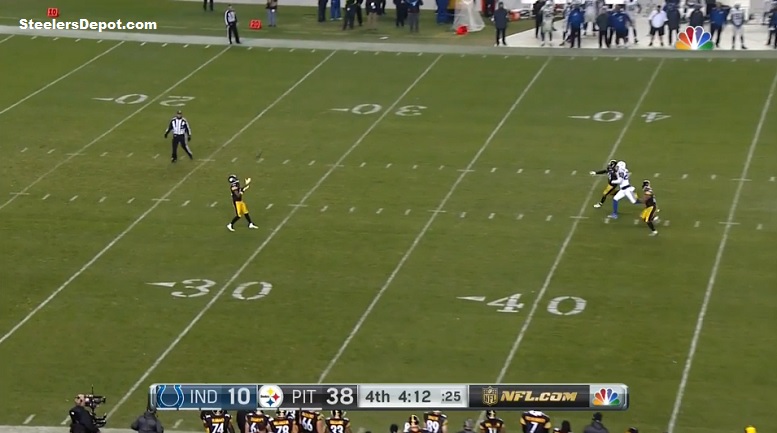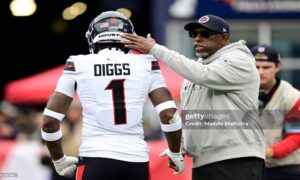Field position. The thing you forget about until it costs your team a game. Talk to any special teams coach and they’ll tell you how important it is and how it impacts the ability to score.
Intuitively, we know the better field position you have, the more likely you are to score and vice versa. But let’s put some actual numbers to it. And see, where, if any, we have a point of diminishing returns, where if we reach “X” we have about the best spot to score. The point where things are going to be about as good as they’ll get.
I dug through the 2015 numbers using Pro Football Reference’s brilliant Play Index to compile my data. We’re looking at average points per drive, adding up touchdowns and field goals and dividing by total number of drives. To make clear, all touchdowns will count for seven points, even understanding there are two point conversions and following last years rule change, missed extra points.
For the Steelers’ offense, here are the numbers.
| Starting Field Position | Touchdowns | Field Goals | Total Drives | Points Per Drive (PPD) |
|---|---|---|---|---|
| Own 1-10 | 4 | 3 | 22 | 1.68 |
| 11-19 | 3 | 4 | 22 | 1.50 |
| At 20 | 13 | 5 | 49 | 2.16 |
| 21-29 | 5 | 10 | 32 | 2.03 |
| 30-49 | 6 | 8 | 30 | 2.20 |
| Opp 49-1 | 11 | 5 | 21 | 4.38 |
Starting inside their 20, the Steelers’ offense saw a big dip in production. Well under 1.75 points per drive. As soon as they reached the 20 – aka touchbacks – the number spiked up to 2.16. And then, even as field position improved, the number leveled off when the ball was still in Steeler territory. There is only a .04 increase in points per drive from the ball being in the 30-49 range as it is on a touchback.
Of course, the numbers tell the story we all know about creating turnovers and starting in territory. A huge spike, averaging better than a field goal per possession.
The data tells me two things.
– Again, turnovers are supreme. Force the opposing team to cough it up in their own end, or pin then deep and get a decent punt return, and if you can start on their side of the 50, you’re golden.
– Is the Steelers kick returner really all that important? It is a tad more difficult to draw conclusions knowing touchbacks are now at the 25 instead of the 20. But the data suggests as long as the Steelers don’t have horrible field position, just get to the 20 (which a touchback would do and then five extra yards), the offense is about as “good” as it’ll get.
Using last year’s data as our guide, the difference between the Steelers starting at their 20 and their 30 aren’t significant. And it’s not like any one sample size is so tiny that they’ll be easily skewed.
So here’s the theory. Mine, anyway. The Steelers offense is so high powered that they’ll succeed in most areas of the field. Again, just as long as the field position isn’t groan-inducing.
As an extension of that, to the original question, why not just take the touchback every time? Or on the returns that do happen, all I care about is getting to the 20, something even Najeh Davenport could do. So while obviously, you want the best man back there, you can say at the same time, it doesn’t really matter. Just find someone who takes care of the football – by far, the most important element – and you’ll be successful.
Defensively, let’s look at the same set of data.
| Starting Field Position | Touchdowns | Field Goals | Total Drives | Points Per Drive (PPD) |
|---|---|---|---|---|
| Own 1-10 | 2 | 0 | 20 | 0.7 |
| 11-19 | 4 | 4 | 27 | 1.48 |
| At 20 | 7 | 7 | 37 | 1.89 |
| 21-29 | 4 | 3 | 31 | 1.19 |
| 30-49 | 9 | 8 | 40 | 2.18 |
| Opp 49-1 | 8 | 4 | 28 | 2.83 |
The numbers are about what you’d expect. A slow climb upwards with the exception of the random dip from the 21 to 29.
We know that when the Steelers pin their opponent to their ten or closer, they only score 10% of the time and overall, have a very small PPD. Jordan Berry finished as the league’s best “pin deep” punter last season and if he can carry that over, the Steelers’ defense will be much better for it. The difference between putting them at the ten or a touchback, last season at least, was over a pull point per drive.
And these numbers show the importance of field position and a quality coverage unit. You don’t want the opponent to reach their 30 because their odds of scoring goes up relatively significantly.








